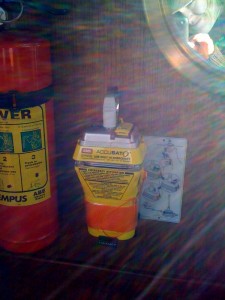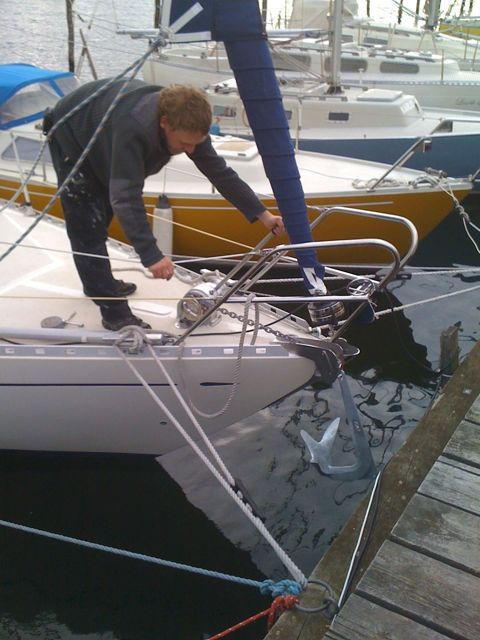Archive for the ‘Uncategorized’ Category
… og ankerspil og -rulle
Friday, May 14th, 2010EPIRB monteret !
Monday, April 12th, 2010 Emergency Eosition-Indicating Radio Beacon
Emergency Eosition-Indicating Radio Beacon
Hvad er en EPIRB ?
En moderne EPIRB består af:
* En 5-watt radiosender, 406 MHz
* En 0,25-watt radiosender, 121,5 MHz
* En GPS-modtager
Hvordan virker en EPIRB
Når en EPIRB udløses, vil den sende signaler, som opfanges af satellitter og videreformidles til redningstjenesten. Nogen får at vide, at man er i nød, og ved hjælp af et avanceret pejlesystem, vil de kunne finde ud af, hvor man befinder sig. Hvis EPIRBen har indbygget GPS, vil både nødsignalet og position blive sendt.
A modern EPIRB is a sophisticated device that contains:
* A 5-watt radio transmitter operating at 406 MHz (see How the Radio Spectrum Works for details on frequencies)
* A 0.25-watt radio transmitter operating at 121.5 MHz
* A GPS receiver
Once activated, both of the radios start transmitting. Approximately 24,000 miles (39,000 km) up in space, a GOES weather satellite in a geosynchronous orbit can detect the 406-MHz signal. Embedded in the signal is a unique serial number, and, if the unit is equipped with a GPS receiver, the exact location of the radio is conveyed in the signal as well. If the EPIRB is properly registered, the serial number lets the Coast Guard know who owns the EPIRB. Rescuers in planes or boats can home in on the EPIRB using either the 406-MHz or 121.5-MHz signal.
Older EPIRBs did not contain the GPS receiver, so the GOES satellite received only a serial number. To locate the EPIRB, another set of satellites (like the TIROS-N satellite) orbiting the planet in a low polar orbit could pick up the signal as it passed overhead. This would give a rough fix on the location, but it took several hours for a satellite to come into range.




